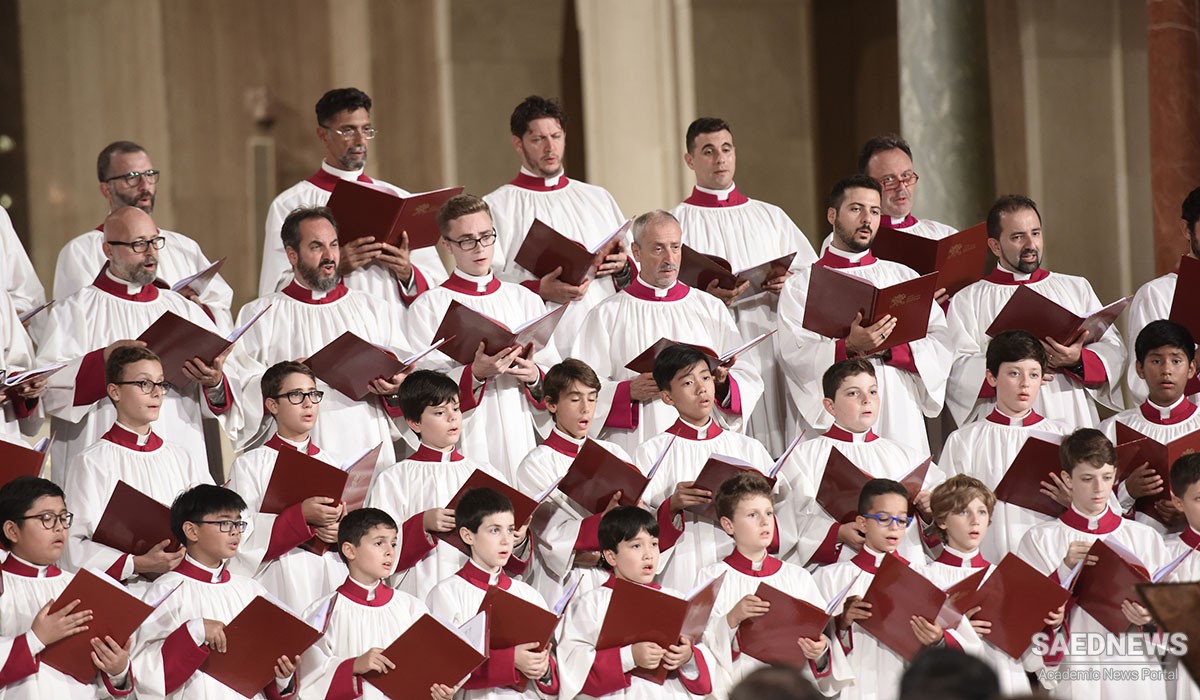In Rome advance was practically confined to establishtments identified with the papal court - the Papal or Sistine Chapel, St. Peter's, St. John Lateran, Sta. Maria Maggiore, and one or two others of the basilicas. While secular writing was not neglected, the accent fell upon ecclesiastical music and upon, such a conservative handling of it as befitted the churches that stood as models for the Catholic world. Furthermore, the drift of Roman taste and manners was at the time less toward sensuous display and less vivacious and impressionable than in cosmopolitan and luxurious Venice.
The 15th century closed with a decided decline in the prestige of the Papacy, owing to the evil lives and violent intrigues of certain pontiffs, but the 16th opened with a reassertion of dignity and power by Julius II. (15°3-13) and Leo X. (1513-22), the latter of whom was called upon to meet the beginnings of Protestantism. After these the longer pontificates were those of Clement VII. (1523-34), Paul III. (1534-50), Gregory XIII. (1572-85) and Clement VIII. (1592-165). During the 16th century it is notable that none of the popes was chosen from Venice or its dependencies.
The Papal Chapel is an institution with a long and peculiar history, reaching back to the singers' schools of the early popes. During the Middle Ages its traditions developed until it became a fixed feature of the papal court. Election to it was a great honor, being for life and including a moderate salary, with many curious perquisites. The rule was that none but priests or those who might be priests were eligible. Elderly members were usually removed by promotion to more lucrative church positions.
The number of singers varied - 9 about 1450, 12-16 a little later, 20 about 1510,36 about 1520, 24 through most of the century, then 18-32 for a time. As the need grew for competent sopranos and altos, much skill was used in the culture of the higher tones of the male voice (a specialty remarkably developed in Spain). After 1600 even castrates or euirati were admitted to some extent. The leadership of the Chapel was ordinarily intrusted to the oldest singer, but special choirmasters were sometimes designated. At first sight it would seem curious that during the 16th century so few of the choirmasters known by nanle were eminent composers, but it appears that the choirmaster of St. Peter's usually had oversight of the choir in the Sistine Chapel as well.
Naturally here sacred polyphony was developed to its highest perfection. It is customary to single out the great Palestrina as the chief agent in this, but it should be remembered that he was one of a series of masters, some of whom preceded him, and that the quick recognition of his power implies a considerable preparation. It was inevitable that the best works of current styles should be desired by the papal authorities, and that able composers should be eager to compete for approval.


 Giuseppe Verdi: A Beautiful Italian Musical Mind
Giuseppe Verdi: A Beautiful Italian Musical Mind














































